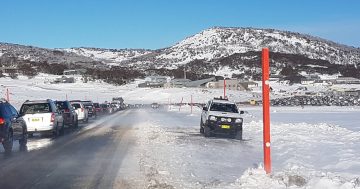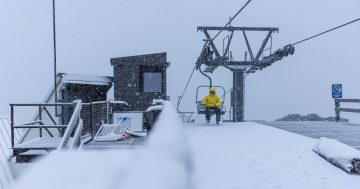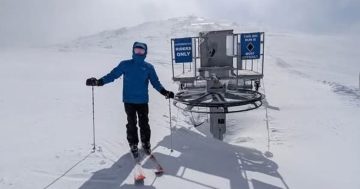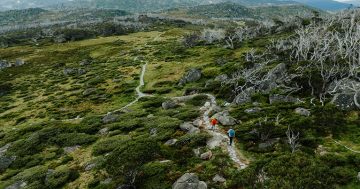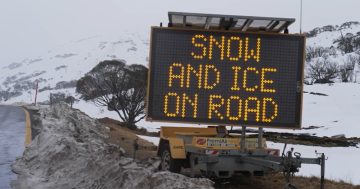
Man-made snow is Corin Forest’s speciality. Photo: Corin Forest.
The snow season officially kicks off this Saturday (8 June), but days of drizzle have forced many of the NSW resorts to push their opening days back a week.
According to snow forecaster Pete ‘The Frog’ Taylor from Snowatch, there has been next to no natural snowfall over the NSW resorts and showers over Thursday and Friday (6 and 7 June) have damaged what little man-made cover there was.
“Perisher will run one magic carpet for beginners and they will set up a mini terrain park on Front Valley for anyone keen enough to hike up, as the lifts won’t be running,” he says.
“The rest of the resorts will have to wait for more favourable conditions.”
Further ahead, however, “things are looking a bit more positive”.
“Showers will develop on 11 June with snowfalls developing up high, then temps will drop on the 12th with snowfalls developing across the 12th and 13th,” Pete says.
“Temps during this period will be cold, so the snow guns should be able to fire for long periods and as such we could see more terrain and lifts opening for the second weekend of the season.”
He expects to see between nine and 26 cm of snow on the ground at Perisher, Thredbo and Charlotte Pass by mid-June, and between three and 12 cm at Selwyn. Or, an “average” season.

Thredbo’s first snowfall for 2024. Photo: Thredbo Resort.
It comes as a new report makes damning predictions for Australia’s future snow seasons.
Modelling from Protect Our Winters Australia (POW) and the Australian National University (ANU) says the ski industry is at risk of major disruptions and shorter seasons if the current level of climate pollution continues.
The report found the average ski season across all resorts in Australia will be 44 days shorter by 2050 under a moderate greenhouse gas emissions scenario and 55 days shorter under a high emissions scenario.
Under a low emissions scenario, it would be 28 days shorter by 2050, before starting to improve by 2080 provided emissions are kept down.
The researchers argue unless urgent climate action is taken, some ski resorts are at risk of closing their doors for good.
“The ski season last year was tough, with minimal snowfall and some resorts having to shut their doors early,” POW director and lead advocate Sam Quirke said.
“This report shows that we’ll see that happening more and more frequently, as ski seasons become more erratic and harder to predict due to global warming, until we do something about it.”
Recent years have shown mixed results.
During COVID in 2021, for instance, large amounts of snow were dumped early on in the season and cover was still one metre deep at Spencer’s Creek, between Thredbo and Perisher by the closing date in October.
In 2022, Weatherzone saw high elevations of Australia’s mainland snow country receive the third best peak snow depth of the 21st century, with Spencer’s Creek recording 232 cm in mid-September.
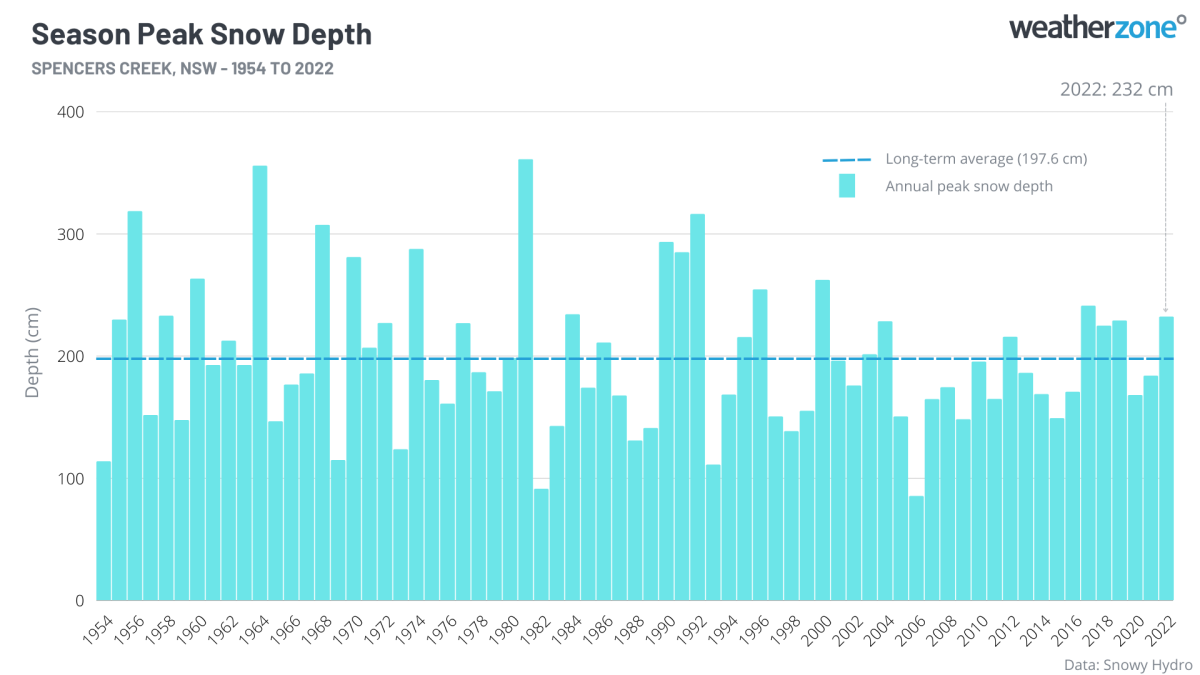
Maximum snow depth at Spencer’s Creek between 1954 and 2022. Photo: WeatherZone.
“With so much snow up high, on the back of a very early snowfall in early June, Australia’s higher ski resorts enjoyed a bumper season with huge crowds that only thinned out in late spring,” Anthony Sharwood from Weatherzone wrote.
However, lower elevation parts had dismal results and as for Tasmania, “forget it”.
Thredbo, both Australia’s highest and lowest mainland ski resort, was almost entirely dependent on snowmaking for the lower runs even if the higher areas had a natural two metres-plus of cover.
Pete Taylor says La Nina and El Nino climate patterns have little effect on defining a snow season as good or bad, and all it takes are “three to four days of cold, snowy weather” during what might be a warmer month than average to “turn it positive”.
“We’ll still get good seasons.”
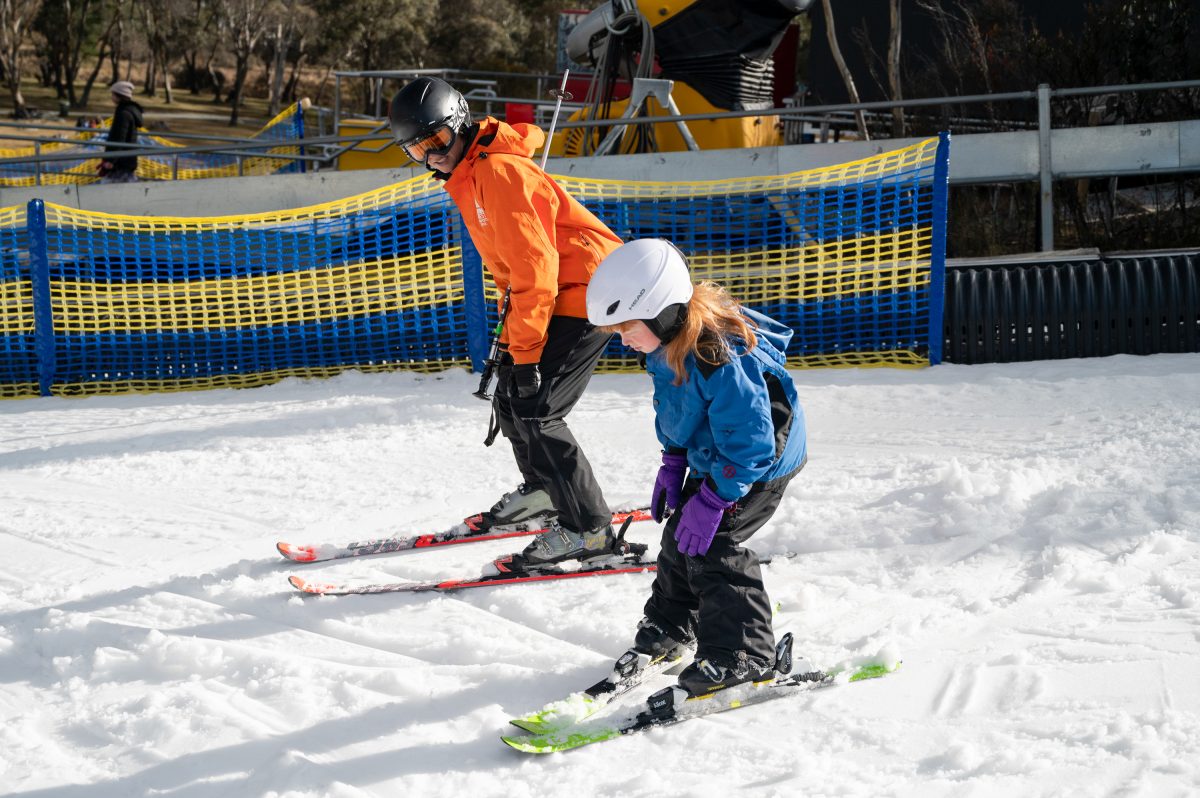
Corin Forest opens for skiing this weekend. Photo: Corin Forest.
Australia’s lowest altitude and most northerly resort certainly isn’t put off. In a statement, Corin Forest in the ACT says it is “defying expectations” and opening its slopes this weekend.
“Despite the recent challenging weather conditions, all facilities will be open for the official start of the ski season this weekend,” it says.
The resort caters to skiing, snowboarding, tobogganing and snow play and features a 1.2 km-long ‘Alpine Slide’.
It might be known as the ski area where it never actually snows, but it assures the snow guns and ‘Yeti’ all-weather snowmaking machine have been busy over the past month churning out an “impressive snow cover”, which will be groomed and spread over the slopes for the opening.
“There’s no doubt climate change is real,” Corin Forest managing director Dane Liepins says.
“We evaluated the latest technologies and concluded that making snow at Corin Forest was still viable. We invested heavily in the latest technology and the results speak for themselves. Over the past 10 years, our snowfields have been open every winter.”








